Wholeness and School Leadership: Why Race and Identity Matter
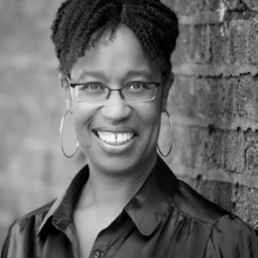
Written by Viv Grant
Director of Integrity Coaching
It is my belief that good school leadership has at its heart a desire for wholeness. It is a wholeness which individuals seek to see manifested through a harmonious interplay of their deepest values and beliefs, by fostering right relationships with themselves and others.
Recent events sparked by the death of George Floyd have clearly illustrated that we live in a society that is far from whole. Fault lines run through the lives of individuals and organisations, teachers and school leaders, families and their children.
We have seen how people have come together to try and repair the damage but there can be no papering over the cracks. For the dream of racial equality to be real, complete healing and transformation is needed.
A gradual dawning
I have witnessed over the past few weeks, that there has been a gradual dawning for many white school leaders of what is being asked of them. This has been a significant paradigm shift. There has been a gradual awakening of the need to review and re-shape white identity in order to accelerate the change that the black community has cried out for.
I recognise and understand that this is unfamiliar territory and can be scary for many. Never before in the UK has the debate on race equality in our schools shifted its gaze so steadfastly onto white identity and race. For as long as I can remember, it has been the other way around. Race equality work has predominantly focused on the black experience of racism and strategies for enabling the black community to overcome the huge injustices and inequalities that they have faced.
Now the narrative has changed. White teachers and school leaders are being called to do their own identity work.
A range of responses
For some, the immediate response has been defensiveness. And yet for others it has been a quiet, studied introspection; a turning inwards accompanied by a deep desire to learn, to enquire, to change, to understand and to grow.
For those who have turned inwards, I am certain that attention to the existential challenge of learning to be whole, will result in, “a net moral gain for all concerned. As that potential grows within us, we join in the potential for personal and social change” (Parker Palmer)
It may seem strange to some that I describe this turning inwards as part of a desire to be whole. Yet as a coach, I have seen the many, many ways in which the school leadership role has caused many leaders to live a divided (and sometimes painful life). Becoming aware of one’s own racial identity and how it has contributed to this can only be an act of service to the greater cause – to a world in which racial equality is a reality for all.
Whole person work
For this to happen, white school leaders need to be supported to see that this is whole person work; work that engages emotions, values and beliefs. It is work that requires them to engage with new personal and professional frontiers. It won’t be easy work, but it will be right work. It won’t come with a National Professional qualification stamp, because the work is ontological. The work is about you.
It will require you to:
- Engage in self-enquiry with an open heart and open mind
- Dig deep and develop greater levels of self-awareness
- Explore your own cultural blind-spots and biases
Essentially, this work will require you to decide how this type of identity work can bring greater agency and potency to your work as a school leader. If you are open and willing, it can bring you to a point where you can say, to be ally in the struggle for greater racial equality my inner truth is:
“The plumb line for the choices I make about my life, about the work I do and how I do it, about the relationships I enter into and how I conduct them”
(Parker J Palmer)
Our society needs to be healed and our schools need to be places of transformation and healing and white identity work has to be a central part of that healing process.
My Wellbeing as a LGBT Teacher

Written by Jared Cawley
Being a teacher who identifies as LGBT (lesbian, gay, bisexual and transgender) has presented its challenges. I believe a fundamental link between identifying as LGBT and wellbeing is safety. At a basic, psychological level, safety plays an integral part in our wellbeing and ability to function as a human. To feel unsafe, means that feelings of uncertainty, anxiety and fear are on loop in our everyday lives. If we do not feel safe in our environment, then our wellbeing will suffer. When we have good mental health and wellbeing, we can work productively and creatively, feel a sense of purpose and achievement, build strong relationships with friends and colleagues, and thrive personally and professionally. As a gay man, I am not part of the majority. I am marginalised. The working world is predominately heteronormative, where ‘straight’ is the preferred and encouraged sexuality.
LGBT Maltreatment
By looking at our recent history, society has not been kind to us queer folk. LGBT people have been spat at, demonised by the press and public, punished and incarcerated by law makers, chemically castrated and driven to suicide (Jones, 2017). The LGBT community has a legitimate right to feel unsafe in today’s world. Across the planet, seventy-three jurisdictions still criminalise private, consensual sexual activity between adults of the same sex. Roughly half of these are Commonwealth countries. Terrifyingly, there are twelve countries which impose the death penalty for being gay (Human Dignity Trust). In a huge number of countries, LGBT victims of sexual or gender-based violence cannot access justice mechanisms or get proper support.
A recent report shows that LGBT people are at a greater risk of being victim to hate crime compared to heterosexual people, where incidents are continuing to rise (Hudson-Sharp & Metcalf, 2016). Also, in the same report, if you identify as LGBT, you are more ‘susceptible to mental health problems than heterosexual people due to a range of factors, including discrimination and inequalities’. I may have painted a bleak and depressing portrait of the world, but this is the reality for many LGBT people. Being a teacher, it is paramount to work in an environment that is supportive, inclusive and takes your mental health and wellbeing seriously and makes you feel safe being the person you are.
Coming Out
The concept of ‘Coming Out’ is a political act. It is a form of rebellion against the heteronormative agenda. We spend our entire lives continuously ‘coming out’ to each new person we meet. This can be exhausting and risky. Making the decision to share your sexuality can be liberating, but we just do not know how that person is going to react. Luckily, I work in a school where I feel accepted, safe, and privileged to share my identity as a gay man. However, being comfortable, accepted, and safe is not always the case for every LGBT person; some LGBT teachers may think it is too risky to ‘come out’, as this could lead to discrimination and hostility from colleagues, parents and students.
Over the years, I have had to navigate the difficulties of working in a heteronormative environment and tread carefully about how open I am about my sexuality. I work in an international school where difference, otherness and diversity are celebrated and encouraged. In my school, families and students come from all corners of the world, dozens of nationalities and languages are seen and heard in our corridors and playground. There is a real richness of diversity and cultures. Yet, there are still moments where I question my personal feeling of safety and fear whether I will be accepted or not when meeting new families, students, and colleagues. Being open about your sexuality in the workplace is a personal choice. I know some LGBT teachers are comfortable to share their sexuality with everyone. On the other hand, I also know teachers who choose to not disclose their sexuality for many reasons. When meeting parents and families, or even colleagues, we do not know their opinions or beliefs about the LGBT community, or how they will react knowing we identify as LGBT. This feeling of uncertainty perpetuates a feeling of unsafety, having consequences for our wellbeing and mental health. This level of uncertainty may prevent LGBT teachers from applying for promotions or moving on to a different school (Lee, 2019). The anxiety and stress of having to ‘come out’ again to new people or having the school community take more interest in your personal life due to promotion, may be a risk that LGBT teachers are not willing to take. To question whether you will be accepted due to your sexuality, is something heterosexual people do not experience.
Section 28
Although the UK has made strong advancements in legislation for the protection of LGBT teachers, some teachers still feel fear in their schools today. Catherine Lee, in her research, talks about the consequences Section 28 had on the education profession. From 1988 to 2003, LGBT teachers were silenced, and their wellbeing damaged by law. This piece of legislation stopped maintained schools from promoting the acceptability of homosexuality. Lee’s research shows that LGBT teachers who lived through Section 28 have a very different experience in their workplace, to those who joined the teaching profession after the repeal in 2003. Those teachers who lived through this persecution are less likely to see their personal and professional identities as compatible and less likely to bring their partner to a school social event (Lee, 2019). Not only should schools encourage and foster an inclusive culture for all but have whole-school practices that are uniquely in place to support LGBT teachers. I think when teachers feel valued and supported, they will feel safe having a positive impact on their individual wellbeing.
What can school leaders do to support LGBT staff’s wellbeing?
Most LGBT school staff will have experienced some sort of battle with their mental health. For a school to be productive and successful, everyone who works there should have good mental health and be supported when help is needed. Here are some tips to support the wellbeing of LGBT staff:
- Use inclusive language
Making small changes around inclusive language can have a huge impact on either making people feel accepted and/or feeling excluded. If we make staff feel excluded, their wellbeing will suffer.
Here are my suggestions:
- When asking about a colleague’s weekend or personal life in the staffroom, be mindful of the pronouns they use to describe their partner. If they do not specially describe their partner as ‘he’ or ‘she’, they make be indicating their partner is of the same sex. Never assume someone is heterosexual and is attracted to the opposite sex.
- Instead of greeting your staff team with, ‘Good morning ladies and gentlemen’, say, ‘Good morning everyone’. With this, you have included all genders and identities without assuming everyone identifies with the gender they were assigned to a birth.
- Challenge colleagues and students who use phrases that diminish sensitivity or acting like a particular gender. For example: ‘man-up’, ‘you throw like a girl’, and ‘boys don’t cry’.
- Visibility
LGBT staff need to feel accepted and be shown that their workplace is inclusive. School leaders should proudly show they support LGBT staff. If we do not feel accepted, then this may have a detrimental effect of our wellbeing and mental health.
- This could be by wearing LGBT lanyards, flying the Pride flag outside and inside their school, having displays around school that celebrate diversity and LGBT issues.
- Have your staff complete a learning walk where LGBT is the focus, can you spot anything in your school that says this is a safe space for LGBT students, families, and staff?
- Educate Yourself to understand LGBT perspective and experiences
Read books and use organisations that specifically discuss LGBT voices in education and whole school approaches. It can be difficult for people who are not part of a minority group and see life from their perspective:
- Catherine Lee’s ‘Courage in The Classroom. LGBT Teachers share their stories’.
- Shaun Dellenty’s ‘Celebrating Difference. A Whole School Approach to LGBT+ inclusion’.
- Andrew Moffat’s book series for the No Outsiders programme.
- These organisations offer a plethora of teaching resources with supporting LGBT colleagues and students: Schools Out, Stonewall Education, Mermaids UK, LGBT Ed, and The LGBT Primary Hub.
The LGBT Primary Hub offers a snappy timeline of our history and glossary of LGBT vocabulary.
References
Dolan, C. (2014) Into The Mainstream: Addressing Sexual Violence Against Men and Boys in Conflict. Available at: “https://reliefweb.int/sites/reliefweb.int/files/resources/Into_The_Mainstream-Addressing_Sexual_Violence_against_Men_and_Boys_in_Conflict.pdf”
Jones, O. (2017, July) Hatred of LGBTQ People Still Infects Society. It’s No Time to Celebrate. The Guardian. Available at: “https://www.theguardian.com/commentisfree/2017/jul/27/lgbtq-partial-decriminalisation-homosexuality-gay-trans”
Human Dignity Trust. LGBT The Law. Available at “https://www.humandignitytrust.org/lgbt-the-law/”
Hudson-Sharp, N., Metcalf, H. (2016) National Institute of Economic and Social Research (NIESR). Inequality Among Lesbian, Gay Bisexual and Transgender Groups in The UK: A Review of Evidence. Available at “https://www.niesr.ac.uk/sites/default/files/publications/160719_REPORT_LGBT_evidence_review_NIESR_FINALPDF.pdf”
Lee, C. (2019) Fifteen years on: the legacy of section 28 for LGBT+ teachers in English schools, Sex Education, 19:6, 675-690, DOI: 10.1080/14681811.2019.1585800
Excellence Begets Excellence
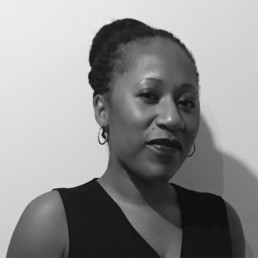
Written by Jenetta Hurst
Music specialist with 15 years’ experience working in secondary schools in a range of settings. Currently Head of Department for Music
Does the voice of Black women exist in the literature on school leadership in England?
Whilst completing my MA in Leadership, I was astounded by the lack of female Black voices presented to me as recommended reading in the literature. By contrast, it was exciting, refreshing and unusual to have a module jointly facilitated by a Black female Professor and a White female Professor. Nonetheless, this apparent lack of representation in the literature led me to engage in conversations with an experienced and successful Black female head teacher to enquire as to why she had not yet penned a book on school leadership.
I encouraged her to please go ahead and write a book, my feeling being that there was a voice and perspective missing from the discourse. Even for me as a thirty-something mid-career professional, the lack of representation had an impact. I couldn’t see myself in the literature on school leadership in England.
Through my own research and further guidance from my course lecturers I was inspired as I began to discover contributions from Allana Gay (2017), as well as several contributions from Black males in academia such as the esteemed Professor Paul Miller. These contributions refined my thinking academically and more so, my understanding of some of my experiences as a Black female school leader in England, my country of birth, and my home.
The global response to the untimely death of George Floyd in Minneapolis in the spring of 2020 led to the increased amplification of key voices on the importance of diversity in education. Observing and engaging in discussions and online training some three years after my initial studies had begun, highlighted to me the extensive research, knowledge and insight of those who had long been flying the flag for diversity of school staffing and leadership, both in the U.K. and globally.
Under-representation of Black school leaders in England
On the Leading in Diverse Cultures and Communities module of my MA, I spent hours digesting data and reading about the experiences of predominantly male Black school leaders in the UK and USA. I carefully considered the importance of place and identity for students in school communities (Riley, 2016) and was hit with the stark reality that at the time of writing, the most up to date data reflected that a mere 2.3% (gov.uk) of head teachers in the UK were of Black and minority ethnic backgrounds. Looking forwards another three years, we see that alarmingly, this figure has increased to just 3.3% (gov.uk).
My concerns remain the same:
- What about retention of Black, Asian and minority ethnic teachers and leaders?
- What about the impact of the lack of representation upon students who, I can say having walked in the role of a middle and senior leader myself, are inspired and energised by seeing teachers working in senior roles, who look like them and may share in their own culture?
- What about the opportunity for Black, Asian and minority ethnic teachers and leaders impacting the school community in a broader way than their classroom, year team or department?
- What about personal levels of motivation and stimulation in the workplace?
As I continue my teaching and leadership journey, I am reminded of the countless positive role models that have featured in my life, both female and male. Individuals of influence who are of course, to be respected for their own perseverance and dedication in their chosen fields. Educators, school leaders, community leaders, sportsmen, civil servants, college Professors and pharmacists, to mention but a few. I count myself as being very blessed to have always had those who have gone before me, to look up to.
Creating an educational landscape where everyone can grow and everyone can benefit
We need to see representation of all marginalised and minority groups to ensure that every child, aspiring teacher, school leader, school Governor and every aspiring academic sees themselves in society. As a musician and music educator, I hope in the future to see an increase in the number of teachers and leaders of music who represent the diverse communities that they serve. I hope for more young role models from all communities to come forwards to pave the way for future generations, ensuring that together everyone can grow and everyone can benefit.
In the week that we celebrate representation in the highest office of Madam Vice President-elect of the USA, Kamala Harris, a self-identifying Black and South Asian-American female (cnbc.com) we remember that excellence begets excellence. And so I encourage us all to continue to do our best, to go out and be the change that we wish to see.
References:
Feiner, L. (https://www.cnbc.com/2020/11/07/kamala-harris-elected-vice-president.html last accessed 10th November 2020.
Gay, A. What does a school leader look like? SecEd. 1st March 2017, http://www.sec-ed.co.uk/best-practice/what-does-a-school-leader-look-like/ last accessed 10th November 2020.
Riley, K. (2016) The Art of Possibilities. (https://m.youtube.com/watch?feature=youth.be&v=wjzdwlHSBRA last accessed 10th November 2020.
Jenetta Hurst is a music specialist with 15 years’ experience working in secondary schools in a range of settings. Jenetta is currently Head of Department for Music in a large secondary school in East London, and is a former senior leader. Jenetta’s interests are staff development, CPDL, ITT and teacher induction and she graduated from UCL Institute of Education with the MA Leadership in 2019. Jenetta is also an Honorary Member of the Birmingham Conservatoire.
Raising Awareness of Black Texts for Primary Schools
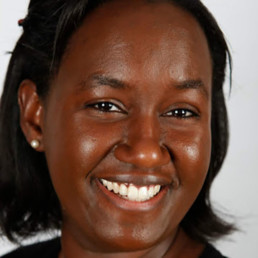
Written by Fabia Turner
Over ten years’ combined experience in education and educational publishing and a member of the Critics of Colour Collective
‘…appreciate our rich and varied literary heritage…’
Primary National Curriculum in England: Framework Document, Dec 2014
Something uncontrollably visceral stirred in me as I watched the global resurgence of the Black Lives Matter movement, with George Floyd’s dying face indelibly imprinted on my mind. I became perplexed and frustrated wondering how I, a stay-at-home-mum in leafy white-middle-class Richmond, could make my voice count; make a real difference for my people in this long uphill struggle against racism, injustice and inequality. I thought about my past work—my teaching and publishing careers—and how this might drive me to support change.
I completed a groundbreaking primary teaching course back in 2001: groundbreaking because at that time, I believe, it was the only PGCE course of its kind with multiculturalism at its core. Back then, I was fervently taught the importance of embedding cultural diversity into every aspect of my teaching practice. Scrutiny of the white-male-scientist trope and Eurocentric teaching resources was radical but also necessary to ensure all children encountered positive images from their own racial/cultural heritage in the classroom. (I continued to challenge these issues during my time working as the only Black editor at a well-known educational publishing company.)
Back to the present, and deep into the throes of Lockdown One and homeschooling, two things happened that really crystallised my thinking. Firstly, my mixed-heritage son confidently asserted that ‘all people in Africa live in huts’. I was taken aback by this and on further questioning realised he had acquired this misconception from reading his big ‘fact’ book.
I promptly researched for better books, and found not much in the way of age-appropriate reads, finally settling on Africa Amazing Africa by Atinuke which, although not perfect, offered a somewhat more nuanced depiction of life in individual African countries.
Secondly, one morning, I opened our home school pack and read: ‘We are learning about national treasure, Sir David Attenborough’. My heart sank! I love a bit of Dave…who doesn’t? But I couldn’t help thinking this was a missed opportunity. How far had education come in terms of diversity and representation since 2001? How many Black zoologists/naturalists were being overshadowed by Sir David, and not being studied in schools? How will children who look like my son be inspired to pursue a science career if white men still dominate their early learning experiences? I know that great work is being done so what’s going wrong? I decided, there and then, I wanted to do something specific to promote the use of diverse and inclusive resources in schools.
My personal insights within the context of the Black Lives Matter protests made me realised we need to go further in terms of accessing multicultural educational resources, especially Black literature. Black History Month is not enough; the odd book pack including the much overused Handa’s Surprise is not enough!
Regardless of how many Black children are in the class, more lessons and resources must reflect Black people as a matter of course, if we are to thoroughly challenge systemic negative racial prejudices and make a real difference for our children’s futures.
Publishers have a huge part to play in this disparity. The Centre for Literacy in Primary Education’s ‘Reflecting Realities’ report in 2019 stated that from the 11,011 children’s books published only ‘743 were found to have BAME presence’. This seems dire but until the situation improves, we need to ensure children are accessing the wealth of wonderful BAME books that have already been published.
I know teachers are tired and stressed by ever-changing government initiatives and ridiculous workloads and, now even more so, due to the unprecedented uncertainty that Covid-19 brings. I salute you! I could not do the job now under such tough conditions. But I do hope that somehow you will muster the energy to continue to be vigilant and reflective regarding your inclusive offerings. Comprehensive use of culturally diverse texts will instil a sense of self-worth, self-confidence, pride, motivation and belonging in Black children, which is more crucial now than ever before.
| Which of these books were written by Black authors? |
So, my blog has a new purpose: instead of critiquing theatre, I am reviewing as many Black children’s books as I can, in the hope I can support primary teachers and parents. Each book is linked to the EYFS and KS1/KS2 curricular, where appropriate, to offer ideas as to where it could be incorporated naturally within teaching and learning. In doing this, I hope to promote use of quality texts by brilliant Black writers and illustrators, such as Laura Henry-Allain, Trish Cooke, Lucy Farfort, Dapo Adeola, and Nathan Bryon.
I’ve also added a Black Children’s Book Directory which I’m constantly updating, and a teacher Resources section.
One day it will be commonplace for us to truly reflect our rich, diverse literary heritage in schools. Whether you’re a teacher, parent, publisher or bookseller I’d really love to hear about any recommendations of books you may have; feel free to send them to me. This blog is just the start of something—who knows how far it will go—let’s just keep going!
Support
If you find my blog helpful and would like to support my mission to get more quality Black children’s books into UK primary schools, then you can buy me a coffee here. Your donations, however small, will mean I can review more books and devote extra time to this mission. It will also help me to promote small independent bookstores instead of linking my reviews to Amazon. I appreciate any support you can offer. Thank you!
The importance and power of strong leadership to create sustained change with respect to inclusion and diversity
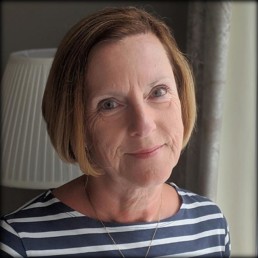
Written by Dr Jill Berry
Thirty years teaching across six different schools in the UK, state and independent, and was a head for the last ten. Has since completed a doctorate and written a book.
This post is based on my contribution to the Boarding Schools’ Association online conference on Inclusion and Diversity on 14th October 2020. Thank you to BSA and Ammy Davies-Potter for inviting me to be part of this event.
“I want to conclude this opening session by focussing on the role of leaders in schools, if we are to move forward and achieve progress with respect to how diverse and inclusive our schools are.
I was a head in the independent sector for 10 years – until 2010. Since then I have worked with many schools and leaders at all levels, focussing on leadership development, so I am still very much involved in the world of education. I am keen to do all I can to support leaders so that THEY can support, and constructively challenge, those they lead to achieve their professional best.
I think it was Vic Goddard, the head of Passmores Academy, who said ‘as a head, you make the weather’. School leaders have the opportunity to model the behaviour they hope others will emulate – students, staff, other leaders across the organisation, governors, even parents – all members of the wider school community. The best leaders I know have a strong sense of moral purpose, integrity and humanity. Their leadership is based on clear principles, and the groups and communities they lead know what these principles are. Ideally, leaders need to LIFT those they lead, rather than grinding them down.
So modelling a principled commitment to respecting diversity and increasing inclusion is going to be part of this. I expect that if you’re in this webinar you share this commitment, and you’re not just ticking a box to show you’ve paid lip-service to the issue.
How do leaders model this commitment? I think it’s about proving yourself to be a strong ally, as Matthew has already mentioned this morning. It’s about being determined to stand by those who face barriers as a result of their ethnicity, religion, culture, age, gender, sexuality or disability – whichever protected characteristic, or, taking into account the issue of intersectionality, whichever multiple characteristics, apply. It’s about giving support to ensure others can take a seat at the table, and they can use their voice and be heard. Can we help to amplify those voices and ensure we model receptivity, especially when what we hear may be challenging and difficult? Can we be strong, powerful allies and encourage those we lead to embrace allyship too? Can we stand up, not stand by? Can we embrace discomfort and recognise that saying nothing doesn’t show respect? Following the killing of George Floyd and the #BlackLivesMatter drive, I was really struck by the Martin Luther King quotation:
‘In the end what we remember will be not the words of our enemies, but the silence of our friends.’
Sometimes when a situation is sensitive, we can feel reluctant to speak up out of fear of saying the wrong thing, choosing the wrong words. I think we’ve realised in recent months that saying nothing could be the worst thing of all. We have to have dialogue. We need to listen and learn, raising our awareness and acting on what we learn. I really liked what Temi said earlier about moving from ‘intention’ to ‘impact’.
I’m very aware that I only have a few minutes, so I’ve given Ammy some recommendations to share with you – podcasts and readings, including an excellent blog post by Hannah Wilson about how to be an effective ally. There are also links to two online events coming up – one specifically for governors, which I hope may be useful for you to pass on to others. See the references at the end of this post.
What do I think is important with respect to strong leadership to create sustained change in this area?
I have four suggestions to make this morning:
- Be clear about your school’s vision and values, and how a respect for diversity and inclusion is reflected in any statement of purpose and priorities and what your school stands for. Ensure your principles are clearly communicated and understood within and beyond the school community, and that these principles are LIVED in the day to day life of the school – in your relationships, practices and policies.
- Be prepared to talk openly about the importance of respecting diversity and fostering inclusion – keep listening and learning. Accept it will be uncomfortable at times, but be willing to embrace the complexity rather than shrinking from it. This involves heads and governors working together, having robust conversations and ensuring you are aligned and pulling in the same direction. It also involves engaging your students in discussion so that they know they are listened to and they are aware of different perspectives and the importance of equitability. They are the next generation – the future and our best chance of achieving sustained change.
- Be willing to advocate for your students where there are tensions, for example between parents and their children over any issue to do with inclusion. I think this is what good schools have always done – while trying to bring parents and children together when there is conflict, helping to resolve difficulties and find a way forward, schools still need to be clear that they are on the child’s side rather than (in the independent sector) automatically on the fee-payer’s, if their principles and moral purpose clearly indicate that this is the right thing to do. Schools have to do the RIGHT thing, not the EASY thing.
- Lastly – work on the curriculum, alongside subject experts, to consider the curricular repercussions of a commitment to diversity and inclusion. I’ve recently read ‘Leaders with Substance’, by headteacher Matthew Evans and he is excellent on the centrality of the curriculum and the focus on WHAT we are teaching and WHY we are teaching it, rather than just HOW we are teaching.
In summary, I think strong leadership is about being a strong ally, and encouraging those you lead to do the same. Courage is clearly needed – there may be pushback from some parents, some governors, some students, some staff. As a head I remember the “This isn’t the kind of community I am buying into” conversation. But if the behaviour or approach behind that sort of comment is actually discriminatory, we have to be strong enough to stand against it.
The resources and links will give further information and sources of support as school leaders determine to do all they can to be strong allies, to address inequity, to make progress and to move forward.
I recognise it isn’t easy.
I strongly believe it IS possible. I don’t think you’d be here if you didn’t share that conviction.
I hope the rest of the day helps to confirm that.
Thank you for listening.”
References:
Anti-racist education – selected resources collated by The Chartered College
Black Lives Matter podcasts
Hannah Wilson (@Ethical_Leader) blog post on how to be an inclusive ally – which contains further resources within it
A Reflection - For my daughters and young girls everywhere
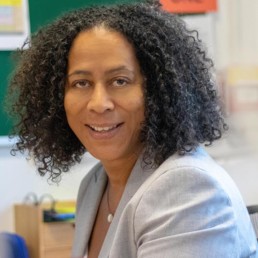
Written by Evelyn Forde
TES Headteacher of the Year 2020, Future Leader participant 2008, NPQH, ASGS Board Member and ASCL Council Member
Whilst I am revelling in the success of winning HeadTeacher of the Year at the TES Awards at the weekend, I thought it timely to capture what this truly means to me as I consider my own personal journey, the unstinting support I have had along the way and my continued commitment to raise the profile of BAME leaders through my work with ASCL and how I can use my privileged position as Headteacher to influence and make a difference.
When I won on Friday, my 16 year old daughter asked me how I felt and I said, overwhelmed and that I would have loved my parents to have been around to celebrate with me so that they could see that the sacrifices they made for me and my siblings was worth it. It’s also hard to put into words what it means to have left school with no qualifications, to have raised two children whilst juggling University, cleaning people’s houses and thinking about how I could put food on the table (we often talk about our lemon curd sandwiches!) to this point in my life, now.
Soon after having my second daughter I quickly realised I needed to go back to school and get the education that would make a difference for all of us. I needed to show my girls the value and importance of education and I needed to pay the bills! I didn’t have privilege, class or money and so I drew upon support of friends and family. I started with a night course in child development, then I did an Access course into higher education and it was here my teacher encouraged me to look further than my local University and took me to visit SOAS. This was probably the first time throughout my time in education that someone took the time to ‘tap me on the shoulder’ and to believe in me, to show me that there is a world of possibilities out there, and for that I am immensely grateful.
From my NQT year at White Hart Lane to now as Headteacher at Copthall School, I have had people on the side-lines supporting me on my journey, from my friends who would help with childcare, who would hold me up when at times it was all too much, to colleagues and Coaches who would steer me in the right direction, offering advice and guidance at the most crucial of times. So that is why I know the HT of the Year Award, is not just about me, it is about everyone who has travelled the road with me and shared in the highs and lows on the way.
A fellow Head messaged me and said winning the award sends out important messages to the next generation, inspiring girls and children from minority backgrounds to believe they can make a difference, and I firmly believe that too. I also hope it sends a message to all my fellow BAME colleagues in education, that whilst the journey to leadership will require hard work and will still come with challenges, those challenges are not insurmountable. Working with ASCL to make systemic change is really important to me, as my lived experiences are what drives me ever more. I also want to be part of a system that has true and not tokenistic representation at all levels of leadership so that our children can see people that look like them. I also want to use my position as a Headteacher to talent spot, to tap colleagues on the shoulder and to always remember never to pull that ladder up behind me as the journey to success is rarely achieved by you and you alone – and don’t I know it!
Biden Wins!
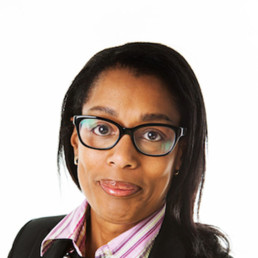
Written by Dianne Greyson
Director of Equilibrium Mediation Consulting and Managing Partner - Synergised Solutions Ltd
When I saw the announcement on Saturday 7th November 2020, I was so happy. I jumped up and down, I was so elated. People may think this is an odd response from someone who lives in the UK. Not at all, there are many people in the UK who felt the same way I did. Emotions were on full display. My twitter feed was immersed with joy and happiness. As I continued with my happy thoughts, I began to wonder why I felt the way I did and why others felt like me. It really wasn’t difficult for me to work out.
Trump represents all that is wrong in the world. He wanted to divide his nation and the world by creating an atmosphere of hate towards those who did not look like him or think like him. His desire to rule in this way showed his need to dominate. He empowered like minded people to rise up and deliver a wrath of hatred which I imagine he hoped would create some sort of master race.
He is the epitome of all that I fight against. As a black women, I use my voice to fight against those who wish to create division and dominate others because they think they have a right. The Joy that I felt about Biden’s win, is the joy that I want to continue to feel when I am advocating for the rights of people to feel valued and respected, no matter what ‘group’ they belong to. My continuous campaigning on the Ethnicity Pay Gap is just one ways for me to visibly demonstrate through action the injustice that has befallen black, Asian and ethnic minorities because others feel they have the right to treat us differently.
Like many of us who are advocating for the rights of others, Biden has a tough road ahead, I hope with the combined strength of Vice President Kamala Harris they can get into some ‘good trouble’ to make the change that USA needs. I hope that we can all learn from this moment and feel reinforced that, when we advocate for the rights of people who have been deliberately treated badly because of structural discrimination, that we are on the side of history.
I would like to leave you with a quote from the amazing Maya Angelou:
“Develop enough courage so that you can stand up for yourself and then stand up for somebody else.”
The need for a trauma-informed, bias-aware and compassionate curriculum
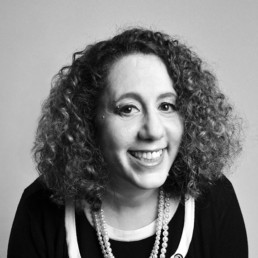
Written by Laila El-Metoui
Equality Advocate | Stonewall Lesbian Role Model 2020 | Pride 365 Champion | Helping leaders foster inclusive & diverse workplaces through training and consultancy | Founder of Pride in Education and Educating OUT Racism
A massive thank you to DiverseEd for organising such a comprehensive event.
My reflections are about us having a trauma-informed, bias-aware and compassionate curriculum, so what does that mean?
One of the previous panelists (Amanda) mentioned refugees and trauma in the previous panel and my curriculum background is in ESOL , EFL teaching English to migrants, refugees and people seeking refuge which is better than referring to them as ‘asylum seekers’. I will be talking about it from a Further Education perspective in the UK and looking at the language we use.
Trauma-informed:
We can look at it from many angles but I’d like to suggest a couple
Firstly personal trauma , you cannot look at someone and guess what their background and experiences have been. Secondly historical trauma – which includes decolonising the curriculum and not looking at subjects in silos for example when teaching French one could look at where it is spoken in 29 countries, why ? because France colonised those countries, the language we use is important, these countries were not ‘conquered’ as stated in britanica.com but invaded. From an ESOL perspective it means being mindful of potential triggers and having systems in place to support them but also the trauma that people may have experienced as a result or leaving their homes or the current pandemic.
Bias-aware:
Breaking down stereotypes and being aware of our own prejudices is a good way to start.
Looking at LGBT+ lives for example, some of the myths commonly heard within the sector include – you cannot embed LGBT+ within classes where people have low level of English, looking at the the language we use and teach for example asking about pronouns for referring to partner and sibling rather than husband and wife, sister brother will lead to a more inclusive curriculum. Other panellists (Lisa) mentioned stories in the previous panel and Chris talked about the lack of visibility in course books, for those very reasons I have designed my own resources, one can embed any themes within a story. I have written narratives which included themes such as domestic violence, social isolation, my journey to the UK. By creating relatable and meaningful content we will develop more than reading, writing, speaking and listening skills, skills like empathy, critical thinking and compassion.
Compassionate:
Compassion is about kindness and fostering an environment where people are free to make mistakes, to experiment and express their authentic selves. Challenging discrimination compassionately, eliciting the difference between understanding, agree and accept; eliciting the difference between an insult and an opinion. This needs to be contextualised within a whole organisational approach and include:
- the use and collection of data so that the content reflects local population
- understanding achievement, success and progression
- a zero tolerance policy with regards to discrimination
- easy access to resources knowledge sharing and training
- making different groups visible and represented (365 days a week) not just for black history month, LGBT HM or disability week
Organisations also need to have:
- supportive forums to raise issues
- a clear and visible commitment from senior leadership
But we also need funding, the ESOL funding has been slashed by the UK government more than halved in fact in the last 5 years. Other factors include the imminent exit from the EU, the immigration Law and many other socio-economic factors which contribute towards a hostile environment for people of colour.
Digital exclusion has been highlighted by this pandemic with the most vulnerable groups not being able to access ESOL provision due to not having a mobile phone or access to the internet. Giving people the tools to access learning is part of having a compassionate curriculum.
To end on a positive I want to highlight how kind people have been and I’d like to invite any ESOL practitioner watching to join the newly created Facebook group called Digital pedagogy for ESOL teachers, where practitioners can get practical tools and resources to share knowledge and support each other: https://www.facebook.com/groups/741096156803038/?ref=share
Laila El-Metoui she/ her / hers
https://www.linkedin.com/in/lailaelmetoui/
Equality Advocate | Stonewall Lesbian Role Model 2020 | Pride 365 Champion | Helping leaders foster inclusive & diverse workplaces through training and consultancy | Founder of Pride in Education and Educating OUT Racism
Diversity in the curriculum: teaching and learning with human stories

Written by Lyfta
Lyfta boosts classroom engagement by connecting with students on an emotional level and sparking interesting discussions. Students are able to connect with real human stories introducing them to diverse cultures and perspectives which builds knowledge and cultural capital.
A few weeks ago I had the pleasure of being part of a panel of esteemed colleagues at the Big Virtual Conversation as part of the series of events organised by #DiverseEd . The session, hosted by the dynamic duo, Hannah Wilson and Bennie Kara, was a chance for us to hear from a range of speakers from the education sector. I had the opportunity to speak about the power of human stories to help to bring diversity into the curriculum, and the key themes are outlined in this blog post.
Asking someone where they’re from can come from curiosity but can also serve to make people feel alienated, by placing undue emphasis on their right to belonging. If you ask someone instead, “tell me about yourself, what’s your story?” it invites them to craft their response and weave their answer so it belongs anywhere and on their own terms.
When you tell your own story you can start to make sense of the connections and links that bring the elements together. I’ve been thinking about the many threads and moments in my own life that seem to have led me to where I am now.
Human stories have always fascinated me. They led me to study social anthropology at university and gave me a reason to explore beyond the pages of books, leading me to buy a year’s open ticket and accidentally spend some ten years abroad, learning, working, teaching and continuing to weave into my story, stories and histories with new threads of different hues, that had echoes of my ancestors. I learned new concepts and perspectives every time someone told me a new story.
During this time I ended up learning Hebrew, which taught me words that just don’t exist in English, opening me up to new cultural concepts and helping me see the world in new and different ways. One of my favourite words with no English equivalent is the word ‘Firgun’ (פירגון)said ‘fear-goon’. This one word describes genuine, unselfish delight or pride in the accomplishment of the other person – or a generosity of spirit, an unselfish, empathetic joy that something good has happened, or might happen, to another person. It is similar to the South African concept of Ubuntu, I am because you are. Your success is our collective joy. And in the same way, your story, is our collective story.
I believe that human stories are more important than ever. The world events of the past 6 months during the global pandemic have brought this home to us in unique and often tragic ways. Like many in the education sector, I’ve been lucky to see the importance of my work’s potential to harness the power of humanity for the common good, even at this challenging time. At Lyfta, we capture human stories in the form of powerful short films and then turn these into 360 degree explorable, immersive and interactive spaces in which teachers and their students can learn about people, places, values and skills.
While we are restricted from close human interaction and travel, these human stories seem more precious than ever. In the words of one student, Thomas, with Lyfta’s immersive platform you are “able to instantly teleport yourself halfway across the world while staying on the same spot and see how things are for real”.
One important aspect of schools’ offering for young people in their care is the element of broadening their horizons, and instilling a sense of cultural capital through the music, texts, art and experiences that are included in the curriculum, such as school trips. We know that even in normal times, many children will not have the opportunity to go far beyond their own postcode.
Teaching and learning through human stories using Lyfta can be a powerful way to ensure that students have experience of the world as part of their entitlement to cultural capital. This can be important also as a way to teach an understanding of the protected characteristics, and show how diversity and equality are promoted within our schools.
We have seen that teaching and learning through immersive human stories can bring breadth, depth and meaning to concepts, taking them from the realm of information to the realm of deeper knowledge. Exploring Lyfta’s storyworlds enables teachers to unlock critical thinking skills in their students and helps them understand complex concepts, they were not aware of previously. Engaging in learning through these powerful stories can provide important breadth. Leading authority on learning, Chris Quigley, describes this breadth as both cultural capital ie. the background knowledge of the world students need for inference and understanding, and also the range of situations students need to grow confidence in the threshold concepts. These threshold concepts are understood as concepts that ‘open up a new and previously inaccessible way of thinking about something’.
Our vision at Lyfta is to ensure that by the time a child completes their education, they will have visited every country in the world, and will have met at least one person in every place they go. Right now, you can take your students all the way to an Ethiopian village to visit Mesgana and Gebeyeu in their family home, or hop over to Malte’s garden in Berlin to see how honey is made, or pop down to Cornwall to litter-pick with Rob on the beach, and so much more.
We have a limited number of places available on our funded CPD training webinars as part of the Connecting Classrooms through Global Learning programme. Participants who successfully complete the course will receive free access to the full range of Lyfta content and resources for a whole term.
Try Lyfta for free here: https://www.lyfta.com/
Remembrance Day
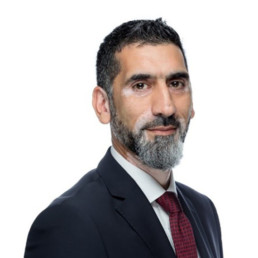
Written by Sajid Gulzar
Founding CEO of the Prince Albert Community Trust (PACT) and National Leader of Education
On October 31st 1914 a 26 year old gunner and his machine gun crew managed to hold their position against a German onslaught. The Germans were using more effective weaponry and outnumbered the gunner and his crew five to one. A second crew fighting alongside the gunner were killed as a result of a direct shell hit. The consequences of the machine gun crews being over-run were potentially devastating. The goal of the German offensive was to capture the vital ports of Boulogne and Nieuport.
The gunner and his crew held the Germans off, they continued to fire at the enemy all day. When all around him had been killed, despite being shot, the gunner continued to fight. Eventually, he was left for dead. The stand made on that autumn day on water-logged ground during the First Battle of Ypre, allowed reinforcements to arrive and the German advance was curtailed. The gunner would later be awarded the Victoria Cross. His citation noted ‘remained working his gun until all the over five men of the gun detachment had been killed.’
The gunner was born in the Punjab province of what is now Pakistan and his name was Khudadad Khan. This young man, a member of the Duke of Connaught’s Own Baluchis helped to ensure that two ports used to supply British troops with vital supplies, remained in Allied hands. He was the first Muslim soldier to be awarded the Victoria Cross and there is a commemorative stone in his honour at the National Memorial Arboretum.
During the course of the Great War, hundreds of thousands of young men left their homes behind to travel to Europe and fight for Great Britain. Many would never return. My mother recalls her father telling her that some villages were almost cleared of their young men. The level of sacrifice is indescribable. Khudadad Khan’s story is one amongst countless others of courage and lives cut short on the battlefields of Europe.
Many of you reading this may be reading about Khudadad Khan for the first time. I first heard about him about 10 years ago. I didn’t know about the Indian contribution to the war effort until well into my twenties. That is despite being taught history at school. Despite teaching history at school. It wasn’t until 3 or 4 years into my teaching career that I discovered that 1.3 million Indians including 400,000 Muslims fought during WW1. That many thousands of them died on foreign shores, having never been to the nation they were sacrificing their life for. I didn’t know that 12,000 wounded Indian soldiers were sent to Brighton, that many of them died and were buried there in the cemetery at Horsell Common.
Soon after I started teaching, the events of 9/11 changed our world. I remember watching the news in horror in 2005 as the details of the 7/7 attacks in London were emerging. I was actually on a visit to the school where I would be taking up a new role in the approaching September. Following the London attacks in particular, there has been a lot of soul searching about identity and belonging. What must the level of disenfranchisement be for someone born and brought up in a country to attack it from within. This is of course the extreme end of the spectrum that goes all the way from not quite feeling you belong to all out war.
I know this may appear a gross over-simplification but identity and belonging are definitely a part of the mix. So, where does Khudadad Khan and his regiment fit in? I spent much of my youth feeling like I don’t belong, particularly when it came to The World Wars. More than once I can remember being told that I didn’t deserve to be here, that the good people of Britain had sacrificed their lives for the freedoms that my family and I were enjoying. That somehow my being here was a betrayal of that sacrifice. I remember that my defence, at least as an adult, was based on the need of the country to rebuild post war and the importance of the migration of my father’s generation to Britain. At the time though, I didn’t know that my grandparents peers had fought and died too, in their hundreds of thousands.
I remember visiting a great aunt on a trip to Pakistan when I was 20 (I didn’t feel I belonged there either but that’s a whole other blog!). Her son had gone to fight for Britain in Burma during WW2. He never returned. 50 years after he left for war, she still waited for him to return. Would my knowing these stories have made a difference growing up? Had I known about the sacrifice of my forefathers to secure our freedoms, had I known about the extraordinary bravery of Khudadad Khan and countless thousands like him? Had I been taught that I had a vested interest, a shared history of blood shed for the cause? Quite possibly yes to all of the above.
What is quite striking is the missed opportunity at this time of year to use this shared history, this shared sacrifice to bring communities together, cement feelings of belonging and to help secure identity. It is not just schools that miss this opportunity, from film to the media, opportunities are missed or just ignored. The recent Dunkirk is an excellent case in point. The film completely ignores the Indian soldiers who were present and took part in the events depicted in the film. I’ve seen many a film and a documentary, chronicling the World Wars. What I haven’t seen very often is a true depiction of the scale of the commonwealth contribution to the cause. When in the epic and beautifully shot 1917, there was an attempt to include commonwealth representation, one right wing commentator described the presence of non-white soldiers in the film as ‘incongruous’. I would suggest that the reason for this is that their stories have never been told. As far anyone learning about the World Wars in school or watching films about them is concerned, they were fought by white men, predominantly in Europe.
The commonwealth contribution needs to be compulsory learning. Our children need to know that the poppy clad fields of European battlefields are soaked in the blood of the non-white commonwealth soldier as well as the English Tommy. Part of this shared history is that our children often live in neighbourhoods, streets and even houses that sent very young men off to war. In some cases these children also have forebears who left their towns and villages more than 3000 miles away to fight in the same war for the same cause.
If you read this whilst thinking about your school’s plan for marking VE Day and Remembrance Sunday, then please share the stories of the young men and women who came from afar as well as those closer to home. Let the poppies you sell symbolise shared sacrifice and shared history in this age of divisiveness.

